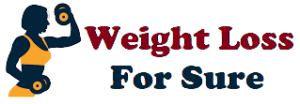In this post:
- How we get here
- Flash forward to now:
- Symptoms you may notice
- Various medical and natural treatment options
- The stress response and its impact on you
- Why overtraining and under-fueling will backfire on you post-menopause
- Creating a polarized sequence of exercise and rest drives results post-menopause
- The 3 training types that will support your goals
- Why you need more protein than you did before
- Whole food carbs and healthy fat
- Eating enough for your needs daily
- How to put it all together: the post menopause training trifecta!
- Access my post-menopause exercise plans
- Find my Perimenopause Training Guide here!
Calling my ladies who are post menopause! This one is for you.
I hear from many women that their concerns about weight gain, hot flashes, bone loss, muscle loss and more are dismissed or diminished, minimized, or they’re told “That’s just the aging process.” I know that the changes you’re experiencing can make you feel really powerless, and helpless, and like your body is a stranger to you.
I might not have all the answers about what you’re experiencing, because we each have a unique health history and needs – but I do have some excellent custom training and nutrition strategies that work for women post menopause thanks to my continuing education and research. I’ll be here soon myself too, and I’m committed to getting this information into your hands so you can continue to build strength, lose body fat and enjoy better energy and mobility for years to come.
After all, the things we do today will set us up for the woman we’ll be in the future!
How we get here
When we’re in our regular cycling years, the fluctuations between estrogen and progesterone that happen with our monthly menstrual cycle give us an “edge” when it comes to building muscle and lowering body fat.
That regular cycle of estrogen and progesterone fluctuating back and forth, and higher levels of estrogen in general means we recover a bit more easily, have more resilience to training more frequently, can regulate our body temperature, and have an easier time rebuilding muscle.
Here’s what that looks like (based on a 28-day cycle for illustrative purposes as women have all different lengths of cycles that are normal):
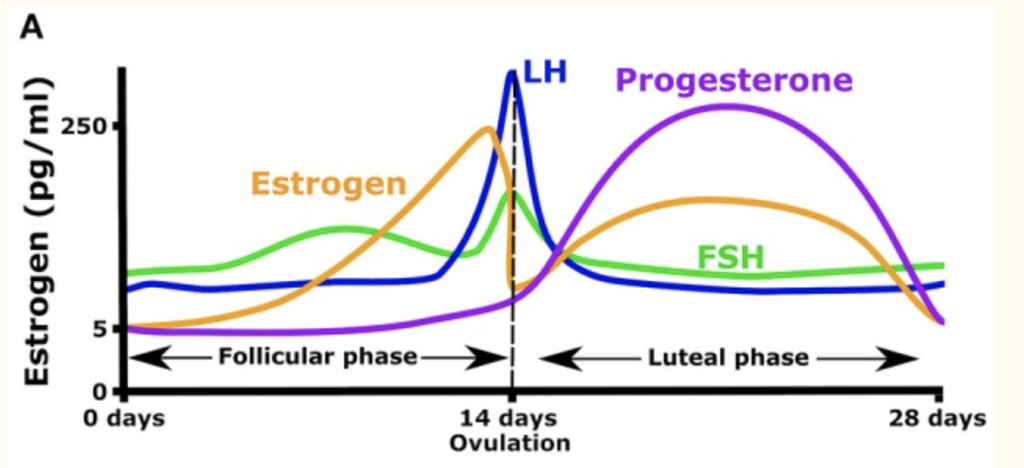
Additionally, we had our highest levels of testosterone during this time of our lives. Testosterone is really important for women, and contributes to our libido function and the growth and renewal of our bone and body tissue (including our muscle tissue).
Muscle tissue is what we call “metabolic currency.” The more muscle you carry, the more efficiently you burn fat and regulate many body functions. This is the body tissue we most want to hold onto as we go into perimenopause and then post menopause. Muscle tissue doesn’t make us bulky; it gives us our tone, tightness and strength in all we do.
Further contributing to why it was easier for you to build and hold onto your muscle tone back then (despite all the diets you probably tried lol), is that we absorb more of the amino acids from the protein we eat during this life stage, providing us with maximum access to the building blocks our bodies need for muscle repair and regrowth after our workouts.
I’m not saying we didn’t have to “work” for our results back then, but it was a lot easier then for some of these reasons.
Perimenopause is that transition phase when your menstrual cycle starts becoming erratic, and the hormone levels can become imbalanced as a result. Since most of our sex hormones are produced in our ovaries, as we have more sporadic and less menstrual cycles we’re producing less and less of these essential hormones that do so many important things for us.
That’s the life stage when you may first have noticed your body not responding as easily as it did before. That might be when you started to struggle with your energy or weight, mood, sleep, and body temperature.
That’s represented on the left side of this chart – where the estrogen and progesterone lines start to go all over the place:
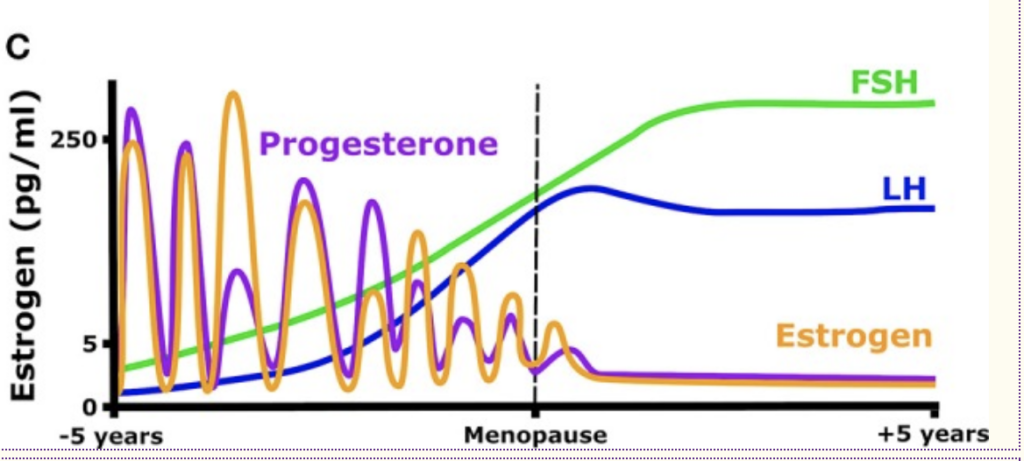
While testosterone is not represented on that chart, it is also starting to decline in perimenopause. And that also adds to the symptoms you may start to notice.
Flash forward to now
Post menopause, our cycle has stopped completely and estrogen and progesterone levels have dropped down. So has testosterone. That’s the right side of the chart above.
Symptoms you may experience include:
- weight gain
- muscle and bone loss
- erratic or lower energy
- disrupted sleep
- hot flashes
- mood swings
- dry skin
- sore joints
Addressing these symptoms
Some of the symptoms you may experience can be addressed and mitigated by working with your doctor to monitor your hormone levels, and you might consider using some type of hormone replacement therapy (HRT) to help ease the transition symptoms and support energy levels. Bio-identical hormones can help you manage things like mood swings and hot flashes.
If you’re interested in hormone replacement therapy and hearing about the different options available, halfway into this podcast you’ll hear my functional medicine doctor discuss different treatment options, and why she recommends some over others.
It’s ideal to have blood work or a urine test done (for example the DUTCH test, prescribed by your doctor) to determine what is right for you.

Supplements like DHEA, a commonly available supplement that acts as a precursor to testosterone and estrogen can be useful in stimulating their production (I recommend working with a doctor on dosing and determining if this is appropriate for you).
The stress response and its impact on you
While most of your sex hormones are made in your ovaries, some are made by your adrenal glands. This is one of the reasons I am always talking about (and personally focusing on) being proactive with stress management, in order to support a healthy stress response. You can support the production of some of your hormones over time, even post menopause with healthy adrenal function.
So many women in my community tell me about the stress they are dealing with. They make time for exercise and they’re doing pretty well with their nutrient intake. But they are still struggling with seeing fat loss. Constant stress can impact our HPA (hypothalamic-pituitary-adrenal) axis. This is how the body regulates our hormone balance in response to stress, which can increase the cortisol levels in our system, causing more fat storage and muscle breakdown.
This is the time to start a daily meditation practice or make it a priority if you’ve fallen out of the habit. Even if you take 5 minutes to sit and breathe or listen to the sounds of nature (the Calm app is a great tool), this practice can help ground you, bring you back into equilibrium, and over time help you develop more resilience to the stress you face. Be mindful of not over-consuming caffeine, as this can also increase cortisol levels.

When we exercise, we strengthen the body and are prepared when we have to lift something heavy out of the blue, or run fast to catch the train. We meditate to develop more internal strength and resilience so that when stressful things happen we are better equipped to handle the burden they put on our system.
Adaptogenic herbs are also promising for supporting the body’s stress response and hormone levels, and in some cases help balance these levels. You might enjoy the article in which I feature six adaptogenic herbs and their properties. These are just a few of the many natural herbal supplements that can support your hormones. What you need will be unique to you. I would also recommend getting some type of hormone testing done to see what herbs might be right for you as well. While herbs are gentle, they still impact your body and it’s good to customize.
Knowing that the body is changing and that we won’t “bounce back” as quickly from an injury, or build strength as quickly means that self-care and consistency with stress management techniques are invaluable.
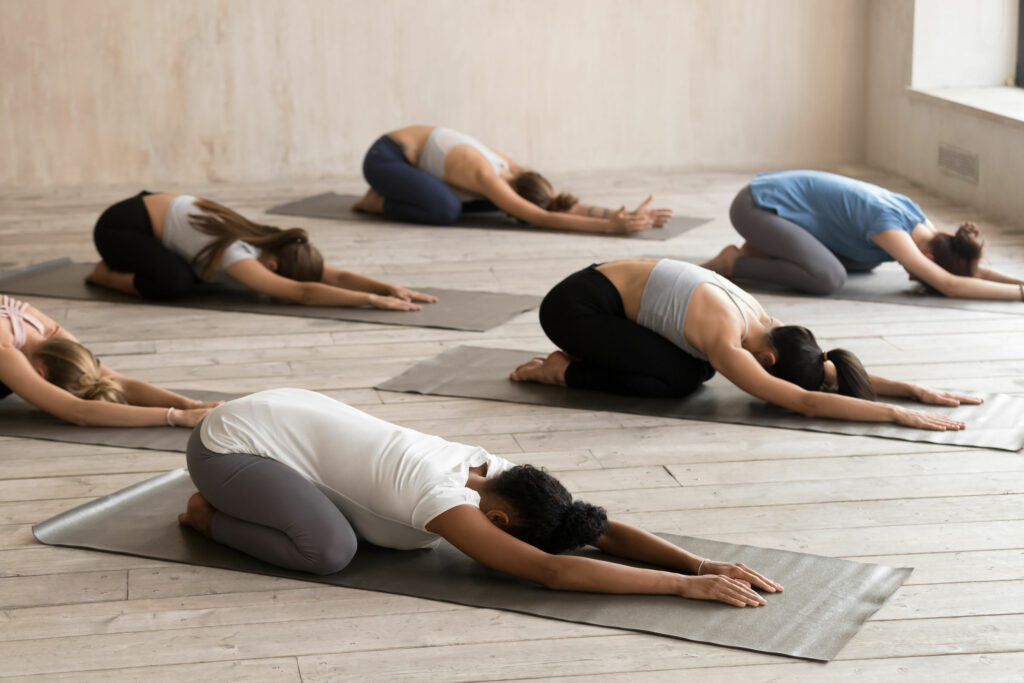
We lose collagen and elastin over time, and being more proactive with warming up and cooling down around workouts, stretching, mobility work and doing more yoga can really help you keep you limber and flexible, and support joint health (more on that coming right up!). Plus, intentional movement can calm and restore the nervous system, lower your stress response and boost your mind-body connection.
Overtraining and under-fueling will backfire on you post menopause.
When it comes to your workouts, staying active and being consistent with your training is important – but this is the life stage where we want to get strategic about our training, rest days and eating habits rather than trying to follow every diet and every influencer with 6-pack abs.
I see a lot of women do inadvertently make things harder for themselves by training more and eating less. This actually has the opposite effect as it creates a greater inflammatory response in the body, and a greater loss of muscle and increase in fat storage.
I think one of the reasons a lot of women accidentally overtrain post-menopause is because they expect to get results during their workout – so “more workouts must equal more results.”
But actually, muscle tissue does not develop or strengthen when you are exercising. It develops and strengthens after you work out, and after you have challenged yourself, when you are resting and refueling.

Some of the featured meals in My Dinner Plan! Recipes and eating plans for 6 months laid out for you to use again and again!
This seems to be the same reason why some women under-fuel – we think eating less means we’re going to become smaller. Depriving the body of nutrients actually means we create a stressful environment internally that deprives us of the building blocks we need to hold onto our muscle, weakens our bones, diminishes our energy, and creates more fat storage.
During the post-menopause life stage, we need a little bit more of a workout stimulus to get those adaptations, a little bit more protein stimulus, and a little bit more of a recovery period to support the tissue repair and regrowth process. This is the path to seeing results again – we just have to dial in our approach. This is all totally accessible, and I’ll show you how!
Creating a polarized sequence of exercise and rest drives results post-menopause
When you work out you create an inflammatory response in your tissue by creating micro tears in the muscle. This is why I always say “Exercise is a healthy stress when we are healthy,” because exercising when our system is already stressed doesn’t contribute to muscle strength or fat loss – it creates more muscle loss and can be a contributing factor in fat storage.
If you don’t get enough rest, you will stay in an inflamed state from your workouts, and not be able to repair the muscle tissue – which means you’ll always be losing it faster than you can rebuild it. This is where many women go wrong – they keep training and training thinking that they’re going to lose the weight, but it’s actually keeping them stuck in an inflamed state that contributes to weight gain and muscle loss. Not to mention, a heightened state of inflammation doesn’t do us any favors in general: it contributes to achy joints and soreness that doesn’t go away.

Paying attention to the rest you need post-menopause is crucial. You don’t have the same “bounce back” resilience you used to have from the estrogen/progesterone cycling.
In the past those higher levels of key hormones allowed you to recover much more quickly. But at this stage of life, we need to get smarter about creating an effective stimulus with the workouts we do, as well as giving our body a long enough recovery period to repair and regrow in the absence of these hormones.
An “effective stimulus” means that your training is challenging enough to stimulate the muscle tissue to respond and the fat to mobilize (in the next section I will detail exactly what to do). That’s going to be subjective to each of us, of course. What’s challenging for you will depend on what you’ve been doing before – so work within your limits and avoid programs that are going to just run your energy into the ground.

We want to create a more polarized workout experience, where we go hard then rest well – and stay out of the “grey zone” doing workouts day after day that aren’t that challenging.
When you do workouts that really challenge YOU, triggering that adaptive response (and inflammatory response) you need to be fully recovered before you tackle your next workout, or your body will just keep constantly breaking down your muscle without having the chance to rebuild. Losing more muscle than you can rebuild means less metabolic flexibility, strength, and mobility.
The 3 training types that will support your goals
There are three specific types of training that will help you improve your muscle and bone density, and lose body fat:
- resistance training,
- high-intensity interval training (explosive cardio, plyometrics, tabatas, sprint training – all of these can be types of HIIT),
- self care training types (the yoga, mobility and stretching you do around your workouts).
(Of course you can enjoy many types of exercise – these are not the only things available! But including them in some form each week will really support you in strengthening and maintaining muscle and bone density, and losing body fat.)

ONE: Resistance training is incredibly beneficial for your body, and the amount of resistance that is right for you depends on what you’ve been doing before. Here’s a guide to help you find where you are now, and what the next steps are:
- If you’re new to training and building a base, bodyweight training can be a great way to build a strong foundation.
- If you’ve mostly been doing bodyweight training, now is the time to explore how you can make that more challenging and start to add some weighted objects to some moves you’re doing.
- If you’ve been training with some equipment (like dumbbells or bands for instance), now is the time to get more specific with how you approach using that weight. If you can start to work within rep ranges – say 8-12 to start – you give yourself a ceiling of how much weight is appropriate for you and a benchmark to get stronger from. So if you choose a weight for a biceps curl and you can do 20 reps with it, go heavier. Find a weight that makes it very hard to go past 12 reps, but that you can do at least 8 with. You will need to do some experimenting but try different things out.
- As you build confidence with this type of training, you will get stronger. You will need heavier weights to do the same amount of reps as before so keep going! If you start finding an 8 rep weight that is fatiguing, you can build into lower rep ranges and heavier resistance, working into a 6-8 rep range and then down into a 4-6 rep range. This might mean you want to expand your collection of home equipment, or go to the gym and start using the options they have.
But whatever you do, wherever you’re at, the goal is to work against enough of a load where you are challenged because that is what will stimulate your tissue to respond in the absence of that anabolic (muscle supporting) estrogen.
TWO: High intensity interval training or HIIT is short-burst cardio. Plyometrics, jumping, sprint training, interval training, etc – all help get your heart rate up for a short duration, helping to mobilize fat efficiently.

Rather than making every cardio session a long slow distance workout of repetitive impact on your joints, short-burst training is highly efficient and yields better results in the long run. It contributes to strong joints, and strengthens your muscle tissue. You can do it on the same day as your resistance training or do low impact resistance training one day, and dedicated HIIT training another day.
If you struggle with cardio, short-burst training can be a great way to slowly ramp it up. If you need to do a lower-impact version of a HIIT move, do what gets your heart rate up and take a modified version as you get stronger.
I hear from a lot of post menopausal runners who notice more aches and pains than they used to. That is a sure sign their body is not able to recover – either because they’re not resting enough to handle the inflammatory burden created by their training, and/or they’re not eating enough protein to support the repair process their body goes through after their training session. If the long, slow distance is something you really enjoy, work it in more strategically (probably a little less, and pair it with more resistance training to strengthen the muscles around your joints) rather than making it the only way you’re training.
THREE: Yoga, mobility and stretching
This is the time to focus on keeping your muscle tissue healthy. You may need a little more of a warm up before your workouts than you used to – and if you’re training at a higher level you definitely want to be warmed up going in. Sometimes you can use the beginning of a workout to warm up. But if you have the time, get on your foam roller and spend a few minutes warming up the fascial connective tissue and preparing for your training.
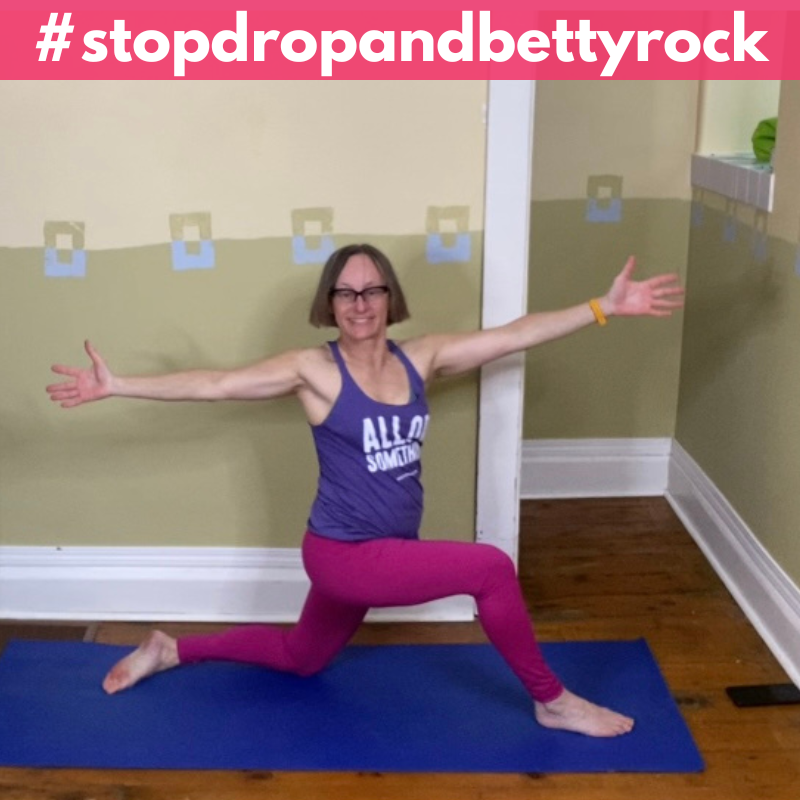
Post-workout, while your body is still warm do a little cool down stretching. This is a healthy way to transition from an intense workout session and bring your heart rate down, but it also supports your joint health and mobility.
Adding mobility or yoga sessions on a rest day is great too, because improving flexibility helps your muscle tissue stay supple and responsive to resistance training and keeps your joints healthy too.
I’m sure you know the importance of regular movement throughout the day, but it’s worth mentioning – a great amount of fat loss comes from low key daily activities like walking – so keep moving and avoid long periods of sitting.
BTW – I have put all 3 of these pieces together for you in my Rock Your Life challenge programs! My challenges have custom sequences (called “tracks”) that offer polarized training and recovery days so you can harness the power of resistance training and explosive cardio for yourself, and get the right amount of rest to see your body respond.
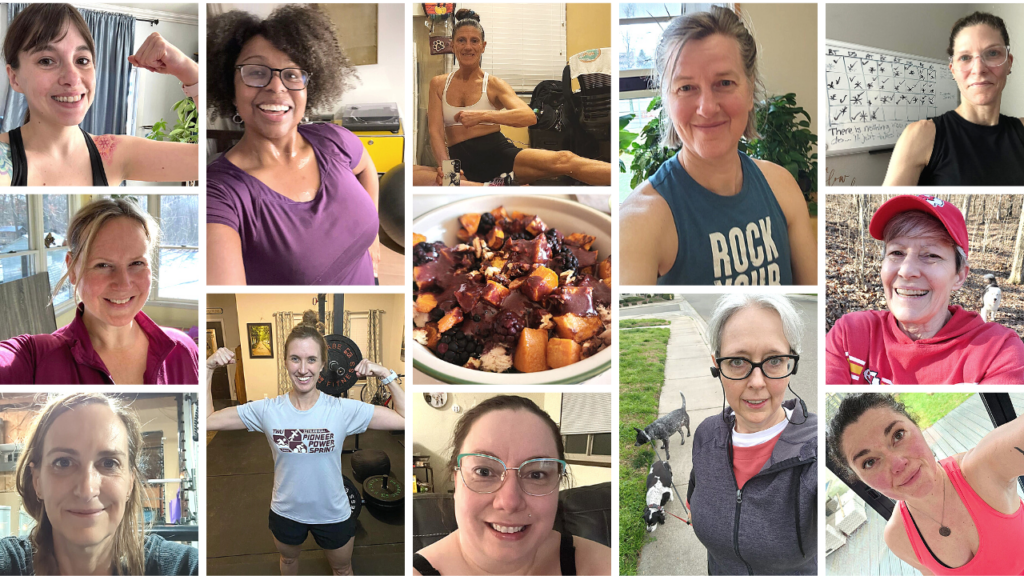
Why you need more protein than you used to
Here’s the last piece of what will get your body to respond to your training post-menopause: eat more protein. If you don’t have enough amino acids (from protein) circulating in your system throughout the day and your body needs to use them, it breaks down your muscle tissue to access the aminos stored there.
The amino acids that we get from our protein foods play an important role, contributing to:
- Muscle tissue repair and regrowth (known as muscle protein synthesis)
- Immune system support
- Cognitive function and mood (supporting the production of neurotransmitters)
- Forming the building blocks of our hormones
- Forming the building blocks of enzymes (important messengers)
We don’t absorb the amino acids as easily as we age, which means we need to eat more protein to do the same amount as before. Active women under 40 can make do with 20-30 grams per meal, but active women over 40 should aim for more like 30-40 grams per meal. This will give your body the building blocks it needs for all the things amino acids are needed for, in addition to helping preserve muscle tissue.

This is one of the reasons why a lot of women start to see such a change in their body composition starting in perimenopause. This change becomes more drastic post menopause – they keep losing muscle because they’re not eating as much protein as their bodies need to maintain their muscle tissue. You can maintain a lot of your tissue – even without much training – if you eat enough protein.
We want to include protein with each meal, and pay attention to fueling around our workouts to optimize our body’s ability for tissue repair and muscle protein synthesis (using wholesome supplements like the Whole Betty protein powders I make or other high-quality products can be really helpful and make life easier).
Maybe you’ve never looked at how many grams of protein are in the meals you’re making. This is the time to start paying attention. You can look up the amount of protein in the food you’re making by searching online, or by reading the nutrition label, and then boost your recipes with a little extra of your protein source to get your numbers up. Start with 20-30 grams per meal, then slowly build on that. It, it will become easier with practice.
What about carbs and fat?
Carbohydrates are broken down into glucose, which can be used for immediate energy, or sent to the liver and muscles and stored as glycogen. Your body needs this fuel for energy, performance in your workouts and recovery too. When you don’t have that ready energy source, your body will break down your muscle tissue, something you want to avoid.
Fiber is an important component in whole food carbohydrates that slows the release of sugar into the blood, which gives you more steady energy, supports your healthy gut bacteria and immune system, and supports an optimal digestive flow. Fiber rich carbs from fruit, vegetables and whole grains are more satisfying and digest more slowly – plus they won’t trigger an insulin response like high-sugar processed food will – so make them your go-to energy source.

If there was ever a time in your life to be mindful of sugar consumption, it is now. Protein can help with that if you struggle with cravings – it is the most satiating nutrient (even more than fat or carbs) and eating enough can help balance out your cravings. One of the impacts that too much sugar can have is lowering our testosterone. Alcohol consumption does that as well, so be mindful and aware that this can contribute to greater bone and muscle loss as testosterone levels diminish.
I don’t recommend a no-carb or low-carb diet for any length of time. Long term carbohydrate deprivation leads to a complete depletion of your body’s storage glycogen levels, depresses your immune system, reduces your exercise tolerance, decreases metabolic function, and a host of other issues.
Fat helps fuel your muscles for low to moderate intensity activity. Healthy fat in your meals is also very satisfying, and can help you feel full when you include it in balance with other nutrients. It also helps slow down how quickly food exits your stomach. This helps keep your blood sugar levels stable which prevents an insulin spike that can trigger fat storage.Keep in mind that some vitamins that your body really needs like A, D, E and K are all fat soluble, and can’t be absorbed without the presence of dietary fat.
Having enough healthy fat in your diet provides you with lasting energy in your workouts and daily activities. Along with glycogen (how your body stores glucose from carbohydrates), fat is burned during exercise and low impact activities to spare the vital amino acids from protein in your muscle tissue.
Eating enough for your needs daily
One unwanted side effect of the hormone changes we experience post menopause is a decrease in appetite. This can make it harder to get the key nutrients that you need.
A startling statistic I learned in my research was that a huge percentage of female athletes (active women count as athletic here!) suffer from LEA, which stands for “low energy availability.”
In a nutshell, LEA is defined as having limited energy available to support your normal body functions once your energy expended through exercise is subtracted from your total dietary intake energy.
In other words, if you’re not eating enough, your body can’t sustain normal functions on top of your workouts. When active women don’t eat enough, their metabolic health and hormone levels, their bone density, mood, ability to build lean muscle, and so much more are affected. This is especially impactful post menopause, as we more easily lose our muscle tissue in the absence of our cycling hormones.
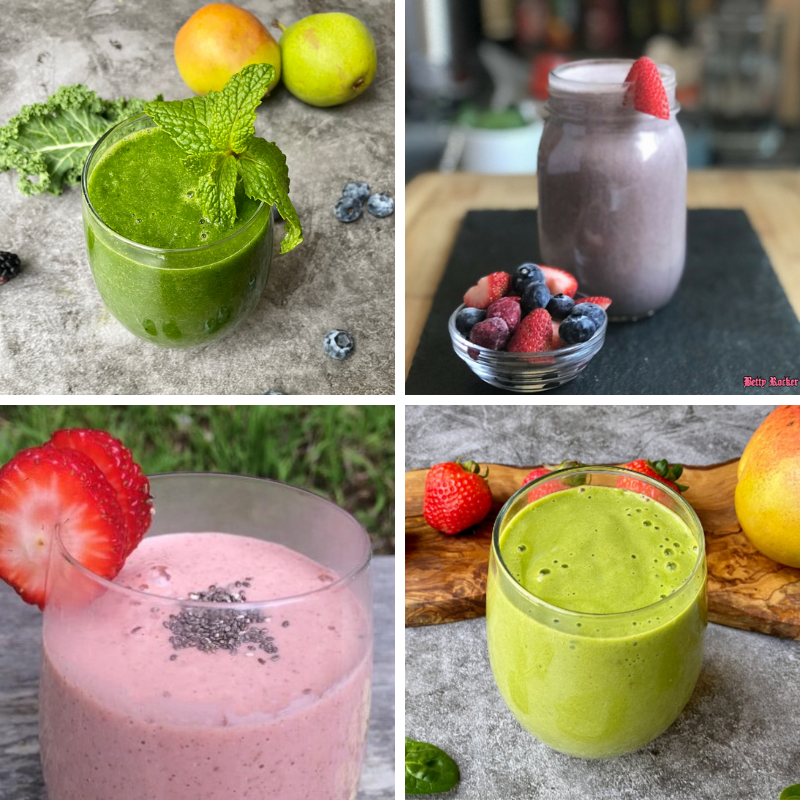
Fueling around your workouts will allow for adaptations, enhance energy output, and help you preserve the lean mass you have so you can build more. If you just focus on 3 meals a day that include enough protein for your needs (alongside your carbs and fats) this can be pretty simple. You might want to add a bonus protein smoothie in any time of day that it’s convenient. This can help boost your overall protein intake for the day if you’re not sure you’re getting enough in your other meals.
Eating more protein is not going to bulk you up or make you a bodybuilder – it’s going to tighten you up and “tone” you up because it provides the building blocks that support your muscular tone. And remember, more muscle means more efficient fat burning.
Try My Dinner Plan for tasty easy meals, “smart” grocery lists done for you and 6 months worth of eating plans!

How to put it all together: the Post Menopause Training Trifecta
This is your essential post-menopause action plan summarized:
- Your training program should include resistance training and HIIT, be challenging for where you’re at, and include self care (like warming up/cooling down, using a foam roller, etc).
- Rest days should be real rest days (not trying to sneak in a long run or an extra workout). Yes you can do some mobility or self care activities, but remember you’re giving your body recovery time so you can hit your next workout hard and drive those adaptations.
- Increase your protein intake and fuel around your workouts so you have the building blocks you need to support your training and daily needs for amino acids.
So a sample schedule for you might look like one of these roughed in schedules:
4 Day split:
- M- lower body workout
- Tu – upper body workout
- W – REST (mobility, self care activity options)
- Th – full body workout (low impact)
- F- HIIT workout
- Sa – REST (mobility, self care activity options)
- Su – Yoga (or other type of self care activity)
3 Day split:
- M – workout (example: HIIT+ full body strength training)
- Tu – REST
- W – workout (example: HIIT + lower body strength training)
- Th – REST
- F- workout (example: HIIT + upper body strength training)
- Sa – REST
- Su – Mobility, Yoga or other self care activity
In Rock Your Life (this is my online fitness membership that includes workout programs and challenges) I have over 50 different workout programs that all include custom training plan options for women in peri and post menopause.
That means you can start where you’re at – whether from home or at the gym – you can do bodyweight workouts, workouts using minimal equipment, or you can ramp it up as you get stronger and even use heavier equipment if you have that option. Using the 3-day and 4-day day plan options, you can strategically train and build strength – and discuss your progress with others plus get support and guidance from me and the coaches in our private group.

All of my programs incorporate strength training plus explosive cardio. The workout videos are follow-along, and offer expert guidance with options for lower or higher impact, form tips and more!
I have everything from bodyweight training to home workout equipment (dumbbells and bands) to full-on barbell weight training. There are low-impact challenges, and support for those beginning or rebuilding.
Rock Your Life is an amazing fitness program, and it’s designed for women of all ages.
How to join: New members can grab a 30-day trial to Rock Your Life, my online fitness studio – no commitment to stay, no contract. Full access to everything in Rock Your Life! Returning members use the returning members button, and welcome back!
What is Rock Your Life: My online gym studio where I host all of my challenges for member access 24/7! It’s the gym that never closes, and the one you can take with you everywhere you go.
Enter the online gym with your login and password, and enjoy instant access to:
- Class library with over 1000 classes of all types so you can get a head start on your fitness goals for 2024!
- Challenge programs – over 50 different challenges for women of all ages that you can start anytime as a member, including 30-day challenges, 14-day, 21-day, 7-day and 5-day challenges of all types of training to sculpt and strengthen your body and mind!
- Healthy recipes to inspire you with new ideas for easy cooking and fueling your body with the building blocks it needs to thrive
- Top-tier support in our private women’s fitness community online or via email – our members are our VIP’s!
Click here to access Rock Your Life!
Zelda was post menopause when she started her journey in Rock Your Life – check out how much she improved her overall health and body composition!

“18 months ago I couldn’t do a sit up, and only 1 push up! I was in full blown menopausal whirlwind, with an onset of hay fever, severe sinusitis, asthma, and an autoimmune condition that was attacking my body, all new to me! I was breathless and really thought I was rolling down a hill of no return. The docs said diet would not help me!
I found Betty Rocker a year ago with MFC, and since then I’ve revamped my fuel through Betty Rocker meal plans. I’m on top of all of my new found ailments – they are still there, but diet keeps the autoimmune in check. I’m a Warrior Woman Challenge twice over, Fitness Addict Challenge, I’ve done 7 weeks of strength training, Sculpt Domination, two 5-day Challenges, and now in the middle of Lioness Phase 1. I’m 68 pounds down in weight….I’m more balanced, a better me, for myself, and for others. Thank you RYL!”
And take a look at Voni’s amazing progress and the results she had once she started following the guidance and challenges inside of Rock Your Life!
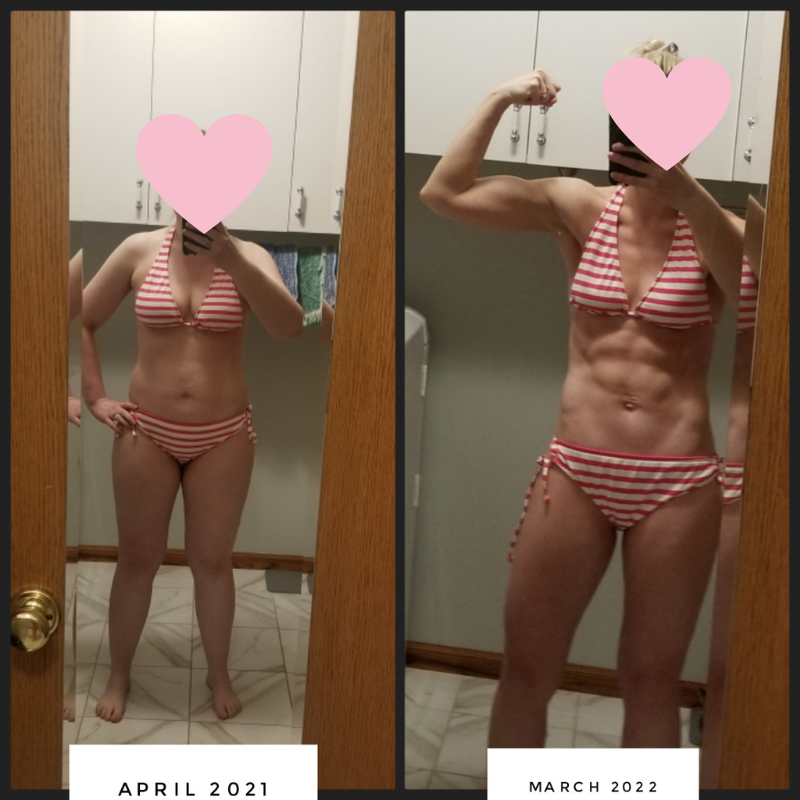
“1 year ago I pressed play to day 1 of Betty Rocker’s Make Fat Cry free 30 day program. I almost died by the way. Today I am on day 5 of my 11th challenge. What I found was a health program that I LOVE! Thank you coaches! After the 30 day challenge, I joined you here on Rock your Life and as a result met the greatest bunch of inspirational ladies ever! Thank you rockstars! And of course a 1 year #rockiversary called for progress photos.
Remember, consistency with your workouts along with your healthy eating, sleep and stress management – and applying guidance for YOUR LIFE STAGE – whether it’s your regular cycling years, perimenopause or postmenopause is what creates a healthy, strong physique and lasting results – and we’ll support you with all of it in Rock Your Life!
Click here to access Rock Your Life!
(returning members use the returning members button and welcome back!)
The post Post-Menopause Training Guide appeared first on The Betty Rocker.
